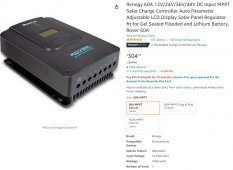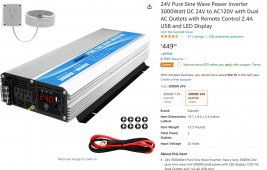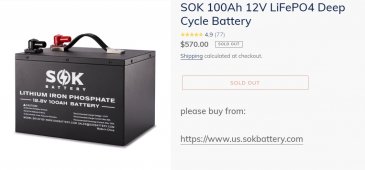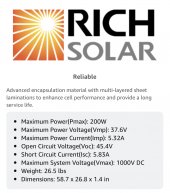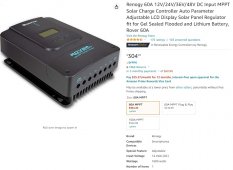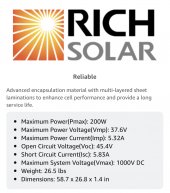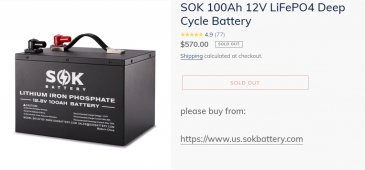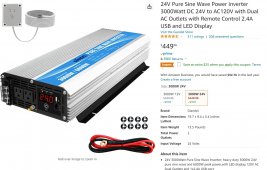MushroomMan67
New Member
- Joined
- Aug 27, 2022
- Messages
- 91
I purchased (in route) the Renogy 60A 12V/24V/36V/48V DC Input MPPT Solar Charge Controller Auto Parameter (see attached pic). Now I am worried.
I have the SOK 100aH 12v (config. to 24v battery bank).
I have a 24v solar panel array (see specs pic)
That being said I am concerned that in the description of the CC it states: Input Voltage: 12 Volts DC
So will it be able to accept 24v solar panels to the Renogy 60A? (again...see pic where it states Input Voltage: 12 Volts DC)
Please tell me I did not screw this up!
I have the SOK 100aH 12v (config. to 24v battery bank).
I have a 24v solar panel array (see specs pic)
That being said I am concerned that in the description of the CC it states: Input Voltage: 12 Volts DC
So will it be able to accept 24v solar panels to the Renogy 60A? (again...see pic where it states Input Voltage: 12 Volts DC)
Please tell me I did not screw this up!
Attachments
Last edited:



